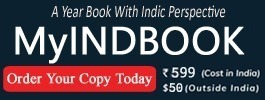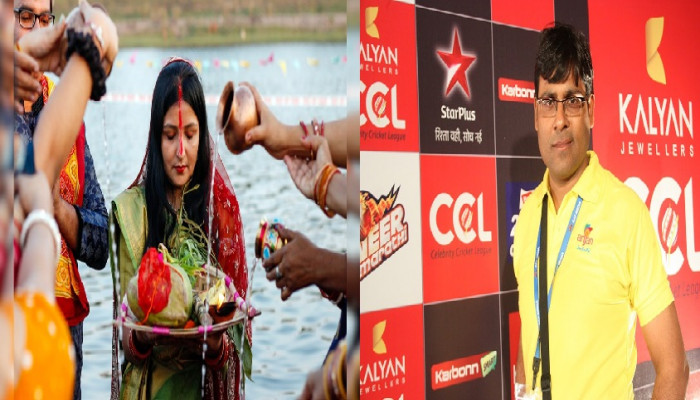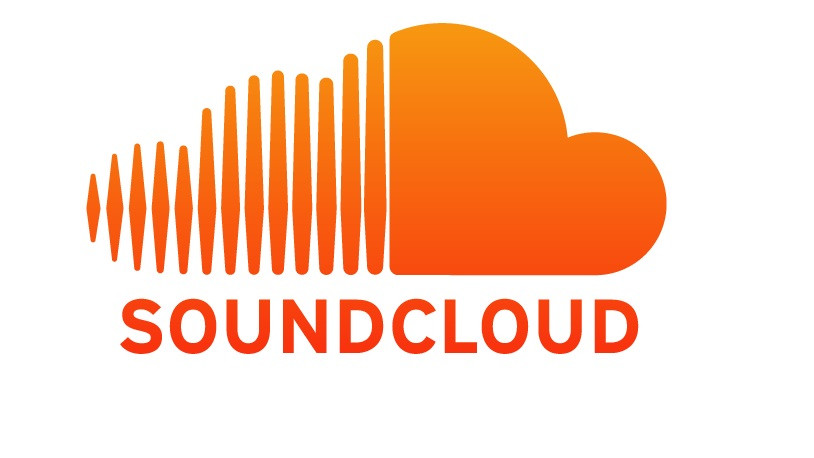Bhojpuri’s Cultural Renaissance: From PM Modi’s Words to Manoj Bhawuk’s Poetry and Songs
- In Current Affairs
- 06:22 PM, Oct 23, 2025
- Rudra Dubey
Bhojpuri, one of India’s oldest and most expressive languages, stands today at a historic crossroads—where heritage meets modern revival, and folk soul meets cinematic creativity. From Prime Minister Narendra Modi’s impassioned speeches in Bhojpuri to the lyrical artistry of journalist–poet Manoj Bhawuk, the language’s story is one of pride, perseverance, and poetic identity. It also strengthens the growing call for Bhojpuri’s inclusion in the Eighth Schedule of the Indian Constitution — a recognition long overdue.
PM Modi’s Support for Bhojpuri Culture and Language
Prime Minister Narendra Modi has consistently honoured India’s regional languages as the carriers of cultural continuity — and among them, Bhojpuri holds a special place.
During his addresses in Varanasi, Siddharthnagar, and Mauritius, Modi has often chosen to speak in Bhojpuri, connecting directly with millions of native speakers in India and across the global diaspora.
At his Mauritius address to the Bhojpuri-speaking community, Modi began warmly:
“Hum raur sabke dekhi ke bahut khusi baani…” — a moment that echoed through the hearts of those whose ancestors carried the language overseas. He praised the community for keeping Bhojpuri geet, folk dance, and Chhath Puja alive on foreign soil, calling them “living ambassadors of Indian culture.”
In a major cultural assurance, PM Modi also declared that the Government of India will fully support efforts to have the sacred festival of Chhath Puja included in UNESCO’s Intangible Cultural Heritage list. This assurance has been welcomed across the Bhojpuri-speaking belt as a recognition of one of India’s oldest sun-worship traditions, symbolising gratitude, purity, and the power of women in cultural preservation.
Such gestures from the Prime Minister reaffirm that Bhojpuri is not merely a regional dialect — it is a civilisational language that connects continents, communities, and centuries.
Bhojpuri: A Living Language of History and Heart
Bhojpuri descends from Magadhi Prakrit, evolving through centuries of devotion, storytelling, and folk performance. Its early corpus — epics like Lorikayan and Birjabh, and oral traditions like Kajari and Purbiya — reflects the wisdom, valour, and humour of the people.
Even without constitutional status, Bhojpuri thrives as a pan-Indian and global cultural bridge. It is spoken by over 50 million people in India, and by millions more in Mauritius, Fiji, Suriname, Trinidad, Guyana, and Nepal — making it one of the most widely spoken Indian-origin languages in the world.
Manoj Bhawuk: The Indispensable Voice of Modern Bhojpuri Literature, Music and Movie
At the heart of this renaissance stands Manoj Bhawuk — a journalist, poet, editor, and one of the most respected voices in Bhojpuri literature and cinema. He has written all the songs for the new Bhojpuri film “Aapan Kahaye Wala Ke Ba”, marking a rare instance of a litterateur shaping a full musical narrative for a film.
The history of Bhojpuri cinema reveals a clear truth — whenever great writers have penned its songs, both the lyrics and the films have turned into milestones. From Shailendra and Majrooh in Hindi to Bhojpuri stalwarts like Moti B.A., Laxman Shahabadi, Bholanath Ghamari, Umakant Verma, and Ramnath Pathak Pranayi, the contribution of poets has defined the industry’s identity. Now, Manoj Bhawuk continues that lineage.
The film “Aapan Kahaye Wala Ke Ba”, directed by Rajnish Mishra, is a family drama that heals emotional rifts through music and storytelling. Songs like “Bhauji Jab Khisiyali Badi Kada Lageli…” and “Dhaan Kutaye Lagal, Hardi Kunchaye Lagal…”, sung by Priyanka Singh, are already popular at family events and weddings. The title track carries emotional depth, while the Ladies Sangeet song promotes the theme of “Chhoti Parivar, Sukhi Parivar.”
The Bhawuk–Rajnish duo earlier created history with the song “Tor Baurahwa Re Mai” in Mehndi Laga Ke Rakhna, reviving memories of Bhojpuri cinema’s golden musical era.
Manoj Bhawuk’s literary footprint extends beyond cinema. He is the author of Bhojpuri Cinema Ke Sansar — regarded as the definitive history of Bhojpuri cinema — and collections like Tasveer Zindagi Ke and Chalni Mein Paani. He has been honoured by Filmfare, Femina, Delhi Press, and Bharatiya Bhasha Parishad, and has received both the Rajya Gaurav Samman from the Governor of Bihar and the Bharatiya Bhasha Samman 2025.
A multifaceted creative mind, Bhawuk worked for over a decade as an engineer in Africa and the UK before turning full-time to media and art. He has held senior roles in Indian television, including project head of Zee TV’s Sa Re Ga Ma Pa (regional), and is currently Editor of Bhojpuri Junction, Director of Achievers Junction, and a member of the Government of India’s expert committee for Chhath’s UNESCO nomination.
He also serves as a jury member for film festivals and an academic advisor on Bhojpuri courses in universities.
The strength of Bhojpuri culture lies in its ability to express profound truths through simplicity — whether in Bhikhari Thakur’s plays, Sharda Sinha’s Chhath songs, or modern Bhojpuri films. Its literature, music, and cinema remain intertwined, giving the community a shared sense of belonging and continuity.
Films like Aapan Kahaye Wala Ke Ba demonstrate that Bhojpuri creativity is evolving beyond clichés — offering quality music, emotion-driven narratives, and linguistic pride.
It is this intersection of language, art, and social conscience that makes Bhojpuri one of India’s most dynamic cultural movements today.
With Prime Minister Modi’s assurance on Chhath Puja’s UNESCO recognition, and cultural leaders like Manoj Bhawuk breathing fresh life into Bhojpuri music and cinema, the Bhojpuri language stands at the dawn of a new era. The call for Bhojpuri’s inclusion in the Eighth Schedule and inclusion of Chhath festival in UNESCO heritage is not a demand — it is a rightful acknowledgement of a civilisation that sings through its people.
Bhojpuri is not just a regional language; it is the rhythm of India’s heartland — a bridge between the Ganga’s banks and the world beyond.
Disclaimer: The opinions expressed within this article are the personal opinions of the author. MyIndMakers is not responsible for the accuracy, completeness, suitability, or validity of any information on this article. All information is provided on an as-is basis. The information, facts or opinions appearing in the article do not reflect the views of MyindMakers and it does not assume any responsibility or liability for the same.







Comments